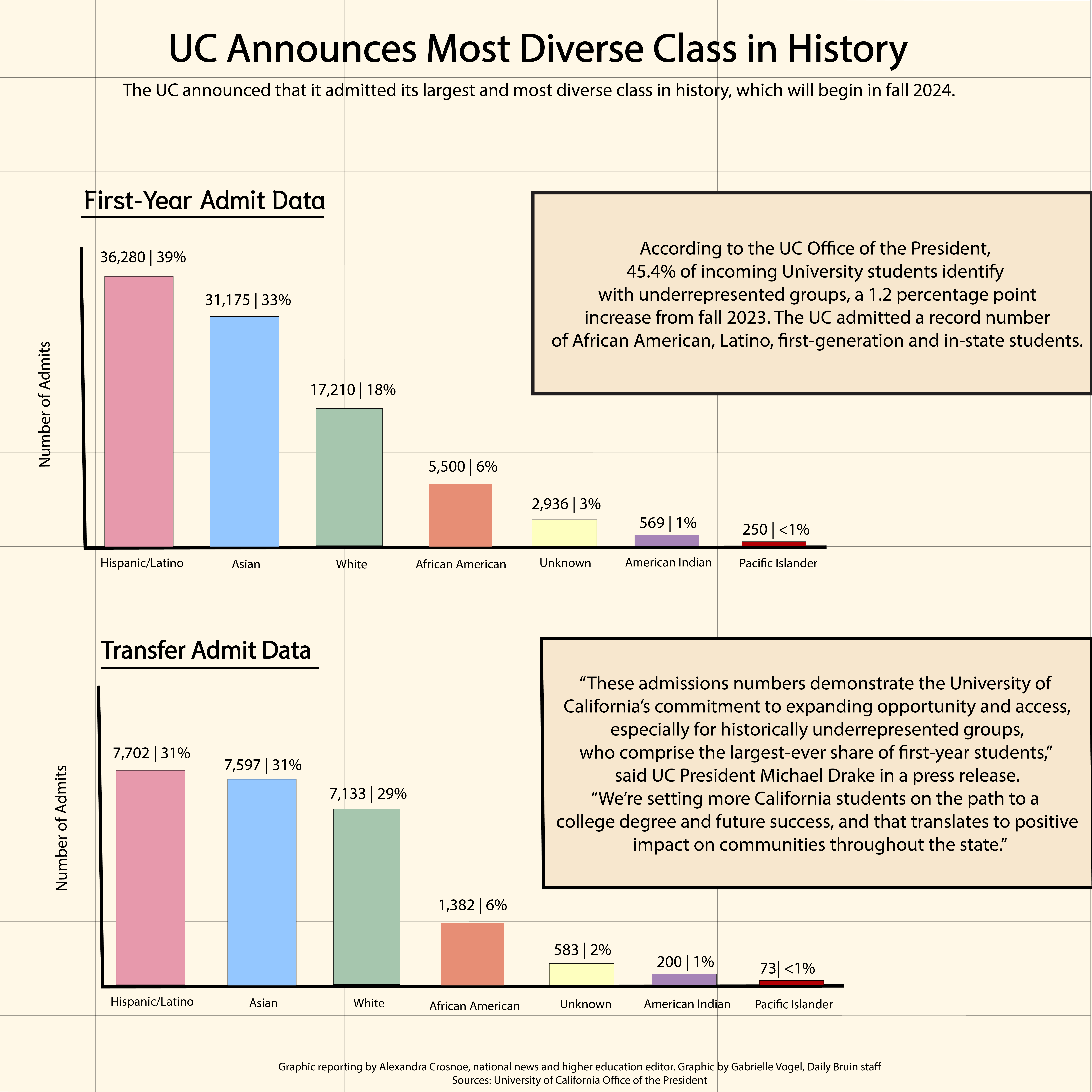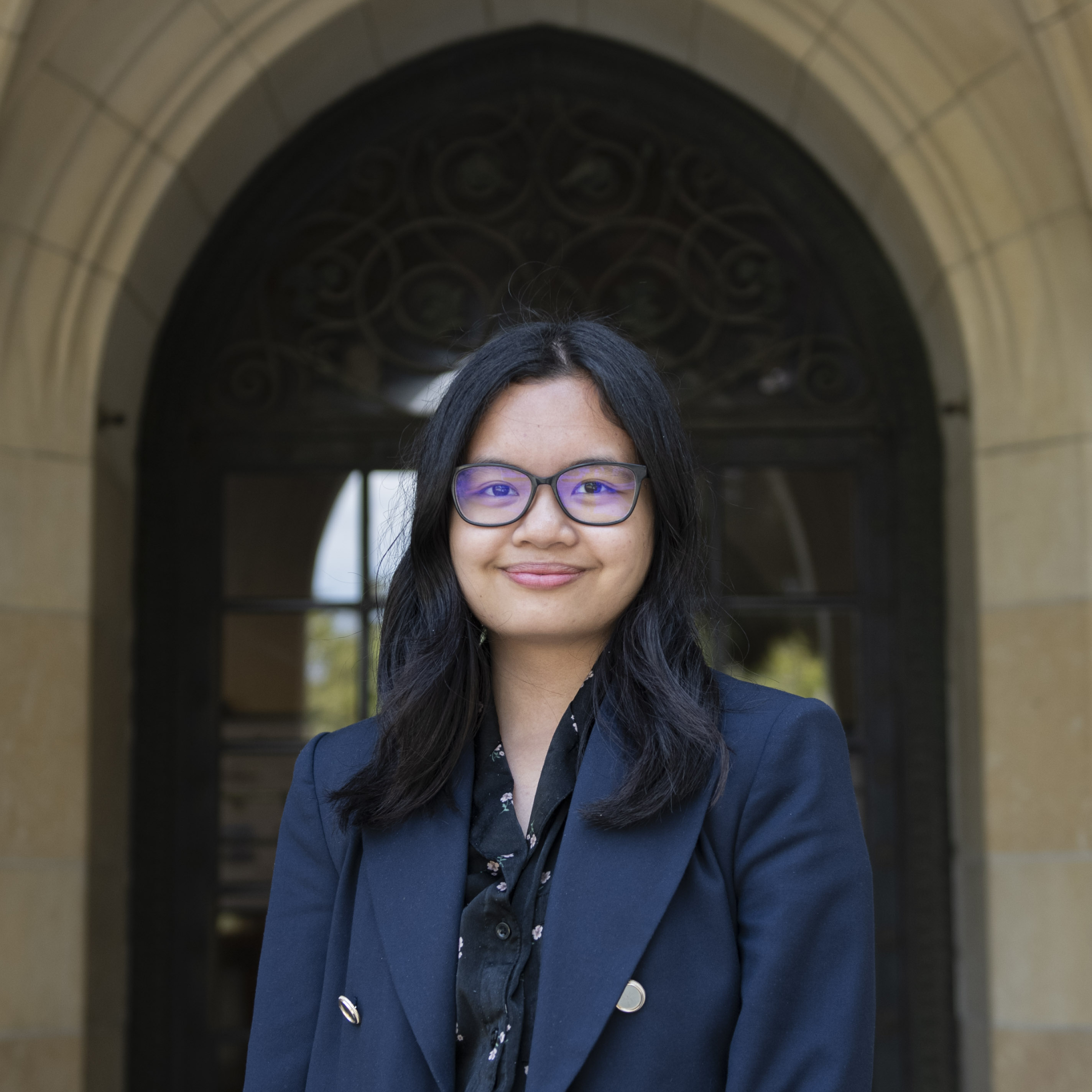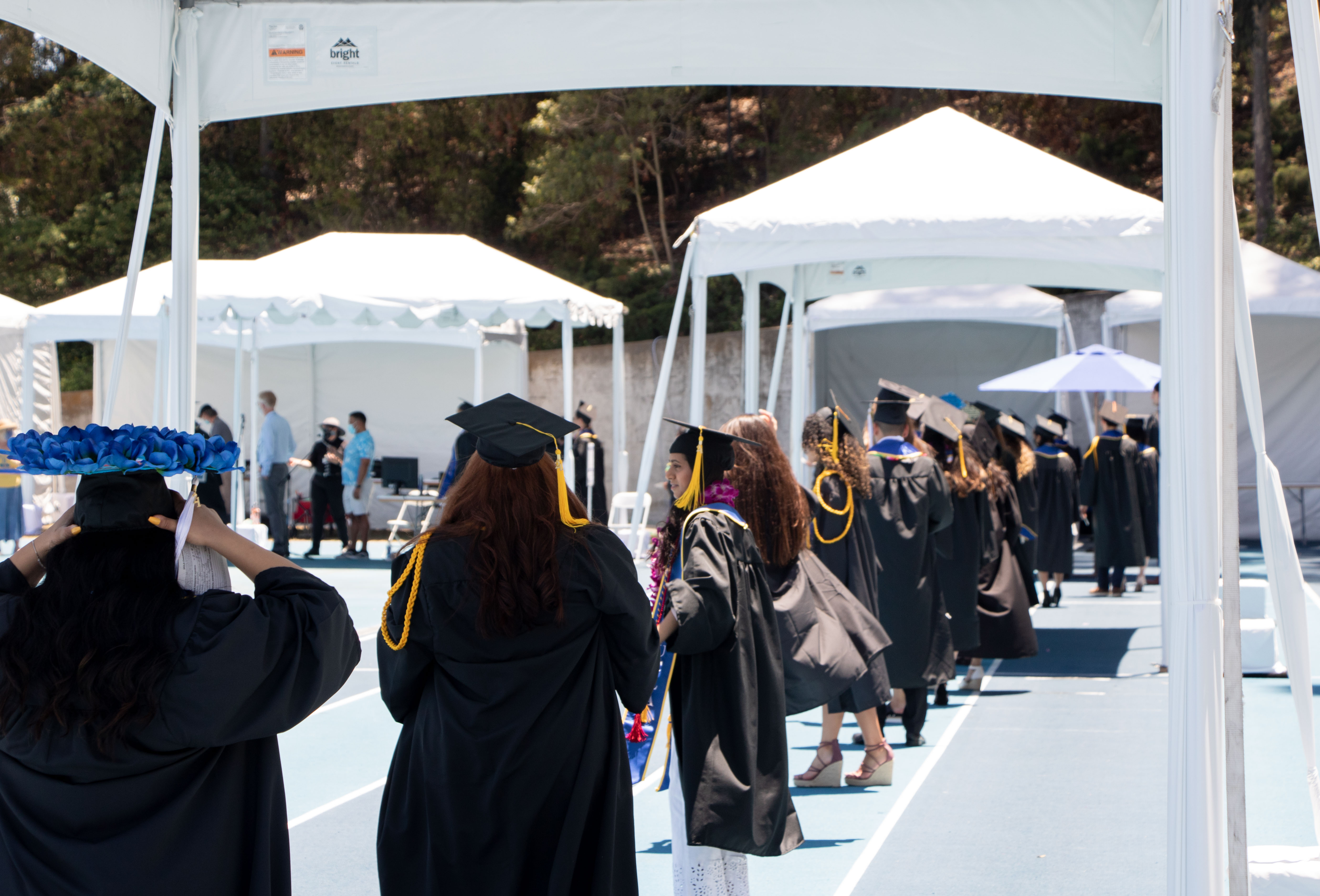UC admissions statistics show record-breaking diversity of fall 2024 class


By Amy L. Wong
Sept. 20, 2024 8:51 p.m.
The UC accepted its largest and most diverse incoming class for fall 2024.
According to a press release from the UC Office of the President, 166,706 students were admitted to the UC system as undergraduates, with a record 45.4% of California first-year admits coming from underrepresented groups.
According to UCLA Newsroom, 37% of in-state first-year students at UCLA will be from historically underrepresented groups – the largest proportion accepted in over 30 years.
The university uses relationship building to recruit students, said Gary Clark, UCLA’s associate vice chancellor for enrollment management.
Relationship building includes engaging with students in the communities they are a part of, Clark said. This can be done through consistent recruitment and outreach efforts at community colleges to help students learn about UCLA as an institution, the application process and the campus, he added.
“Programs like that can’t be one-offs,” Clark said. “Communities need to know that we’re going to be present on a regular basis, that they can trust us each year for their students and to support them – not only through the process, but if they choose enrollment here – to support them, once enrolled, towards their path to persistence and graduation.”
A diverse student body leads to opportunities to learn from others who have different perspectives, said Lori Patton Davis, a professor in the School of Education and Information Studies. This encourages people to think outside of their echo chambers, she added.
“When a student graduates from college, they aren’t going to be just with people who look like them or think like them,” Patton Davis said. “Going to college with folks who are different from you certainly helps to build an understanding of what it means to be a good citizen and be in community and to live in a world where people can engage with one another across differences and similarities.”
The largest demographic of first-years admitted from California is Latino students, who constitute 38.6% of the UC’s admitted class of 2028 – an increase from 37.7% the previous year. UCLA has a goal to become a Hispanic-Serving Institution, which is an institution whose student body is 25% Latinx, by 2025.
A student body consisting of different perspectives also enriches the experiences of students, staff and those studying abroad at UCLA, said Cesar Pacheco Garcia, president of the UCLA Latino Alumni Association.
“People who maybe oppose diversity initiatives don’t have a full understanding of the disparities that exist, and they might see the world from only one perspective,” Pacheco said. “Diversity drives the innovation that we need in every sector of society, which is good overall for the world.”
Others who are opposed to diversity initiatives in college admissions may think that pursuing diversity takes away from other students, Patton Davis said.
“If you look across centuries, our campuses have increasingly become diverse,” Patton Davis said. “Some people have an issue with diversity because there’s a belief that – for example – people of color are less intellectual, or that they don’t belong, or that diversity is somehow pulling away from white students.”
Another reason the UC’s admissions practices have become controversial is the assumption that they violate Proposition 209, which banned the consideration of race, ethnicity and sex for admissions and employment decisions by California public institutions, said Mitchell Chang, UCLA’s interim vice provost for equity, diversity and inclusion. Although a 2023 Supreme Court case banned affirmative action in college admissions nationwide, Proposition 209 has been in place since 1996.
The university is compliant with Proposition 209, Chang said. With more than 100,000 applications, admitting underqualified students is not a concern, he added.
“People don’t understand that we simply receive way more qualified applicants than we can admit,” Chang said. “It’s not like we are admitting unqualified applicants – we have way too many applicants to have to worry about that.”
The increase in diversity of the incoming classes should be acknowledged, Patton Davis said.
“I think the University of California should really celebrate this historical moment and that it is something that is worth building upon,” Patton Davis said. “It’s a model for preparing students to live in a world of difference and engaging with people who are different – and understanding that that’s a good thing.”



